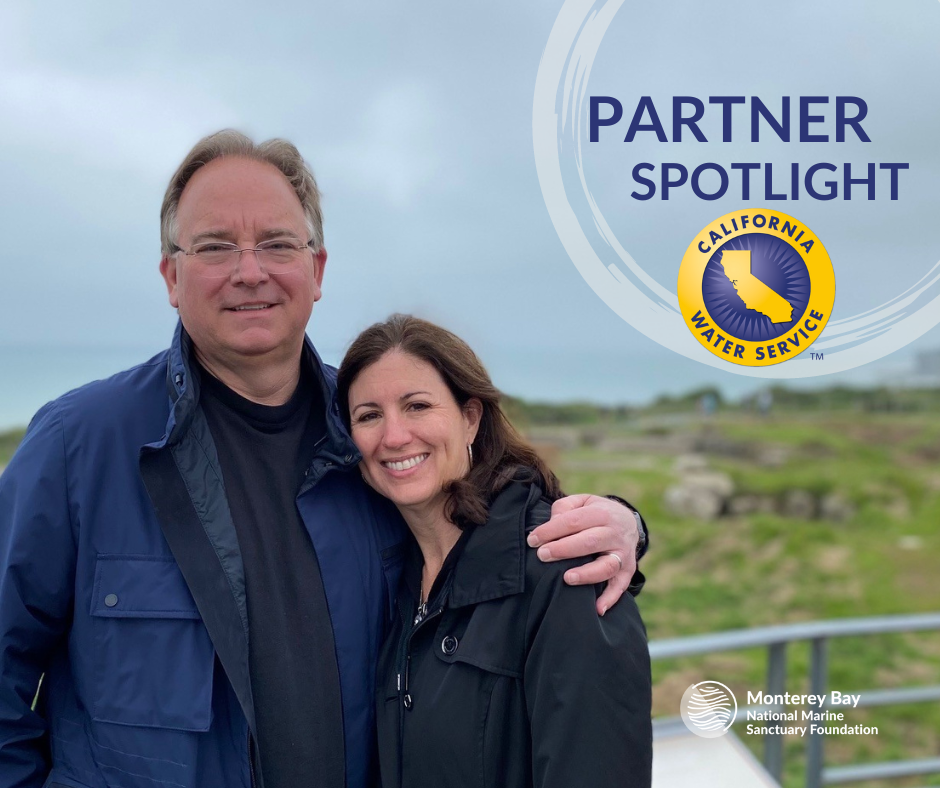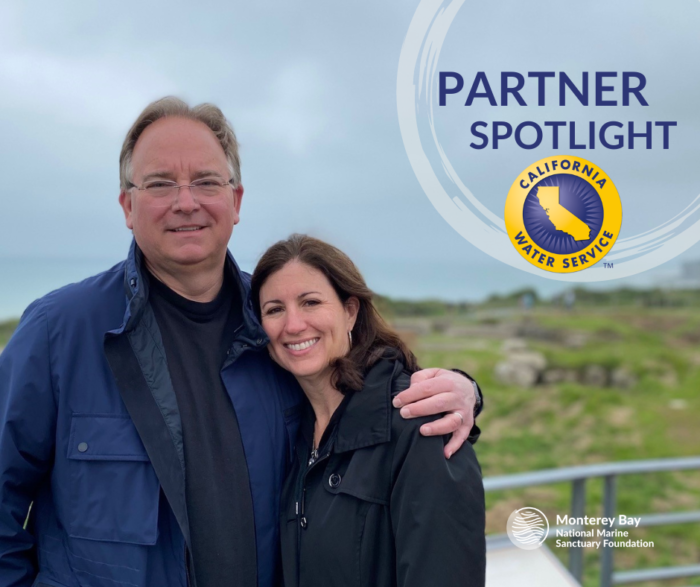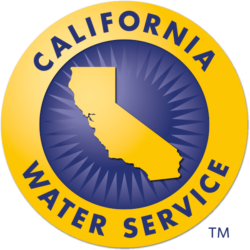
Donor Spotlight: Cal Water Services, an Interview with Marty Kropelnicki
Sustainability, Resiliency, and Public Health – an Interview with Marty Kropelnicki,
President & Chief Executive Officer of California Water Service Group
 Last week, we sat down with California Water Service President & CEO Martin “Marty” Kropelnicki to discuss our partnership and commitment to environmental stewardship.
Last week, we sat down with California Water Service President & CEO Martin “Marty” Kropelnicki to discuss our partnership and commitment to environmental stewardship.
This interview has been edited and condensed.
Q: Can you tell us a little bit of background about yourself?
A: Yes, I grew up in the South San Jose area. My parents were farm kids from Northern Minnesota – they lived way up North, right up to the Canadian border, which is probably one of the coldest spots in the U.S. When they got married, they headed west and never looked back. Because my parents lived in a colder climate, they preferred going to the beach for holidays and vacations. I have a lot of fond memories of living in the area. It’s a very special place to grow up and I am very grateful for that luxury.
Q: What is your earliest or most profound memory of the ocean?
A: I have many great memories of the ocean, but my earliest memories are probably around when I was 4 years old. I remember getting knocked down by a wave and my mom grabbing me by the arm and picking me up and being on my dad’s shoulders as he would dunk me in and out of the water. One of my favorite things about being a kid and being in the water is that when you’re knocked down by a wave and you sit there in the sand as the water comes in and goes back out – it gives you a sense that you’re moving, you really get to feel the power of the ocean, and feel that you have motion with the ocean.
Q: How did you get involved with Cal Water?
A: I joined California Water Service Group in 2006 as the Vice President, Chief Financial Officer. In 2012, I became President and Chief Operating Officer, and in 2013, I became President and CEO.
Q: Can you tell us about the history of Cal Water and what it does?
A: California Water Service has been around since 1926. It was started by three World War I veterans that were profoundly dedicated to serving the community and serving our country. Since then, our theme, as a utility, has been to support and serve our customers and communities. We serve about two million people in the state of California, but we also serve parts of Hawaii, Washington, New Mexico, and Texas. We mostly provide fresh water, but we also have other services such as wastewater and recycled water services, brackish desalinized water. We always say that our job is to worry about the water, so our customers don’t have to – we aim to be good stewards in the communities that we operate in and ensure that everything we do is sustainability-focused
Q: Can you give more details on the wastewater and recycled water services you provide? Are those services provided in California?
A: We do recycled water services in California – we are actually the largest retailer of recycled water in the state. One of our more recent projects is providing recycled water to the Apple Campus in Cupertino. We are their water utility and provide all their tap water and we’ve partnered with wholesaler Valley Water and the city of Sunnyvale to get recycled water from their wastewater treatment plant and use that water for the greenery and plants around the Apple Campus. We also provide this service for some of the oil refineries down in L.A.
Hawai’i is a little bit further along the curve of using recycled water services – we provide a large amount of the tap water on the Big Island and take wastewater, treat it to a very high standard, and then repurpose it to irrigate the golf courses and the greenery around the hotels. We do that right next to the ocean in a very ecologically sensitive area and it works very well.
Q: Cal Water mostly deals with issues of fresh water and is primarily inland. Do you see any direct connection from what you do into the ocean?
A: At the macro level, it’s one big ecosystem and it’s all connected. Part of the fallacy that people get caught up in is they say, “Oh, it’s my water, it’s your water, it’s the ocean,” when that’s not true. It’s all one big ecosystem and we’re all connected. Things that happen in the ocean can affect the groundwater tables. For example, we must manage things like saltwater intrusion. This is crucial for coastal communities. We pump water basins underground to get our fresh water. As you pump that water out of the basin, it must get replenished either through rain or recharging. If you don’t recharge it, you can get saltwater intrusion that comes in from the ocean, which can create all sorts of problems. So, it’s all interconnected and it’s important that we work together.
Q: Can you tell us about Cal Water’s commitment to sustainability and how it evolved recently?
A: Cal Water’s motto has always been “Do the Right Thing.” We’ve always been a sustainability and resiliency-focused company. We have a fair number of European investors. They are a little different than domestic investors because they’re more focused on what we’re doing to protect the environment, how we treat our employees, and how we get involved with or give back to our communities. We’re kind of like Kermit the Frog, we’re green by nature. We’re also very deliberate – we are not a “greenwashed” company. Protecting the watershed and our water systems is one of the most important things we do.
Around 10-12 years ago, we began focusing more on a concept referred to as ESG, which stands for Environmental, Social, and Governance. These are criteria that are used to assess the work that we do as a company. We’ve gone through the 2-year process with our board to identify what we do and how it affects things like climate change, noted our points of measurement and how we’re going to improve them moving forward and published that in our ESG report. These reports are published to the public on our website, so I highly encourage reading that report if you’re interested.
Q: What challenges does Cal Water face in terms of sustainability?
A: The biggest one right now is the drought. It’s not just a California drought – it’s the entire Western U.S. In California, we’ve done a better job than most states on conservation but that only gets you so far. If you subscribe to climate change, it’s common knowledge that droughts are only going to get worse, and we are faced with the challenge of looking for new supply sources, developing new treatment standards and identifying opportunities. For example, California only repurposes around 5% of its water, while in the Middle East, there are countries that repurpose 80-90% of their wastewater. We can and should use that as a tool to improve our commitment to sustainability and recycle our water.
Wildfires are another big challenge – we have improved our emergency preparedness and emergency response plans and work with the local county and state Emergency Operations Centers to help coordinate water supplies for firefighters.
Q: Do the fire departments use repurposed water?
A: It varies all over the state. In the area that I live, there is a purple fire hydrant, which is recycled water that can be used for firefighting. There are many reasons that repurposed water is not commonly used for firefighting – you’re spraying it on a home. What standards are that water treated to? Are there bacteria in it? Can it cause side effects? That’s the kind of stuff that we have to take into consideration.
Q: With the drought, are there any ongoing conservation efforts in the state?
A: There are conservation efforts in the state of California right now. In Southern California, there are parts of our service territory that can only water one day a week. Where I live, we can water on Mondays, Wednesdays, and Fridays but it has to be after eight o’clock at night. Depending on where you live, water supply can vary radically. For example, Monterey has a pretty constrained water supply. California has adopted a standardized drought plan throughout the state – right now, we are at stage two, which calls for voluntary reductions.
Q: What would you encourage people to do at this stage in their personal water usage?
A: First, you should check with your local water provider. Everything should be up on their website. I would also make sure you have low-flow toilets. You can also teach your kids to not keep the water running when they brush their teeth – you’d be amazed at how much water that uses. When you plant, choose native plants that don’t need as much water. Grass uses a lot of water so choosing other things like foliage can be way more water efficient. Some parts of the state also offer recycled water that you can get from a local provider to water the plants in your yard – all that information can be found on your water provider’s website and drought response plan. What’s really important here is working together. If we all do simple things and share the burden, then we can accomplish the goal. All these little things will make a big difference.
Q: Do you feel that partnerships, like ours, are necessary in our larger commitment to combat the effects of climate change and water scarcity?
A: Absolutely with a big ‘A.’ With the looming threat of climate change, we have to work together. It’s the only way to fix it. I always tell employees at Cal Water that if we wait until its requiredto do it, it’s probably too late. It takes businesses, nonprofits like the Monterey Bay National Marine Sanctuary Foundation, and communities to work together and go after that low hanging fruit to make a difference because we have got to slow this thing down. If we don’t, we’re really going to be in trouble.
Q: What top priority environmental impacts do you hope to make through your partnership with the Monterey Bay National Marine Sanctuary Foundation?
A: The biggest thing is education. It’s really important to bring kids out to places where they can see, feel, and touch the issues that we are talking about. I think it’s important to focus on bringing kids not just from the Monterey area, but from the other communities as well. It’s important to bring them to the ocean and let them see what you do, why you do it, and what happens if you don’t take care of it.
At Cal Water, we have a program that we’ve been doing for a few years called the “Cal Water H2O Challenge”. We take kids from elementary schools, and we give them a water challenge and they compete for scholarships and find solutions to current problems. So, it’s pulling them in and letting them touch, and feel the problem, and then they are able to carry that forward, and be more aware of the issues that affect our environment.
Q: What are Cal Water’s goals for the next five or 10 years?
A: It’s really about sustainability, resiliency, protecting the watershed, and maintaining public health, especially through this drought. We want to make sure that every drop of water counts.
We’re at a tipping point now with the population increase in California – we’re using the same structural backbone that was built in the 40s and 50s and at some point, you outgrow your shoes, and you have to get some new shoes. I think it’s about figuring out what size shoe do we need, where we get them from, and really making sure that the shoe fits, and that it’s going to last a long time because we’re a big state. We use a lot of water. And right now, we are not harmonized, which is why our partnership is so important. It’s going to take environmentalists, farmers, and urban users working together in a balanced way to protect our ecosystem.
Q: Do you have any closing comments you’d like to add?
A: Some of my fondest memories are from being in the Monterey and Santa Cruz area. Thank you for what you do and helping preserve this region, it’s a very special place.
The threat is real and it’s not going to fix itself. We all have to work together and get our arms around the beast called climate change and come up with a plan to deal with it. Otherwise, we will all lose. We have to work together collectively on solutions that promote sustainability, resiliency, protect the environment, and deal with climate change. Failure is not an option.

Martin A. Kropelnicki
President & Cheif Executive Officer
California Water Service Group
San Jose, CA
Martin “Marty” A. Kropelnicki is President & CEO of California Water Service Group, NYSE listed “CWT”. Mr. Kropelnicki joined the Group as Vice President, Chief Financial Officer (CFO) and Treasurer in 2006 and was named the President and COO in 2012. He then was appointed President & CEO of the Group effective September 1, 2013. He has over 30 years of experience in utility finance and operations, including 15+ years as a CFO with companies listed on both the Nasdaq and NYSE. He has held executive level positions at Pacific Gas & Electric Company, Deloitte & Touche Consulting Group, and Hall Kinion & Associates, whom he took public on the Nasdaq exchange in 1997. He serves on the board of the Bay Area Council, The California Foundation on the Environment and Economy, UWUA Power for America Training Trust Fund, and is an active member of the Silicon Valley Leadership Group. Further, he is a past President of the National Association of Water Companies and currently serves on their board of directors and executive committee. He holds a Bachelor of the Arts degree and a Master of the Arts degree in Business Economics and Finance from San Jose State University. He was the recipient of the prestigious 2016 Naval Heritage Award and was named the Bay Area CFO of the Year in 2009 as well as awarded Graduate of the Decade from his Alma Mater in addition to being named alumni of the year twice by the department of economics.
